Introduction to Israel War Iran EchooPlus
The conflict between Israel and Iran has deep historical roots and continues to shape the Middle East. Recent developments have intensified tensions, drawing global attention. At the center of this evolving narrative lies EchooPlus, a tool or concept influencing the dynamics of warfare, diplomacy, or communication.
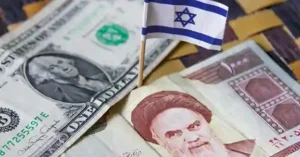
Historical Context of Israel-Iran Relations
The rivalry between Israel and Iran is rooted in a complex interplay of ideological, political, and strategic factors that have evolved over decades. Understanding the historical context is essential to comprehending the current tensions and the stakes involved for both nations and the region at large.
The Early Years: Cooperation and Mutual Interests
In the years following Israel’s establishment in 1948, relations between Israel and Iran were not marked by hostility. Iran, under the Shah’s rule, recognized Israel de facto and maintained diplomatic and economic ties. Both nations shared a mutual interest in countering Arab nationalism, particularly under leaders like Egypt’s Gamal Abdel Nasser. This pragmatic cooperation was largely driven by shared geopolitical concerns rather than ideological alignment.
The Islamic Revolution of 1979: A Turning Point
The Islamic Revolution in Iran in 1979 drastically altered the relationship. Ayatollah Khomeini’s regime rejected Israel’s legitimacy, branding it as an oppressor and a Western outpost in the Middle East. The revolution marked the beginning of Iran’s explicit support for Palestinian causes, particularly groups like Hamas and Islamic Jihad, which oppose Israel’s existence.
The post-revolution Iranian leadership framed its foreign policy around exporting its revolutionary ideals, which included opposition to Israel. The two nations transitioned from covert allies to overt adversaries, setting the stage for decades of hostility.
Proxy Warfare and Regional Rivalry
Throughout the 1980s and beyond, Israel and Iran engaged in a proxy conflict, primarily in Lebanon. Iran’s support for Hezbollah, a Shiite militant group in Lebanon, became a cornerstone of its strategy to challenge Israel. Hezbollah’s attacks on Israel and Israel’s retaliatory strikes have created a cycle of violence that persists to this day.
Iran’s influence expanded through its “Axis of Resistance,” comprising Syria, Hezbollah, and other aligned groups. This network has been instrumental in countering Israeli influence and advancing Iranian interests in the region.
The Nuclear Question
In the early 2000s, Iran’s nuclear ambitions became a focal point of tension. Israel views a nuclear-armed Iran as an existential threat and has repeatedly called for international action to halt Iran’s nuclear program. Covert operations, including cyberattacks like Stuxnet and assassinations of Iranian nuclear scientists, have been attributed to Israel, further deepening hostilities.
Iran insists its nuclear program is for peaceful purposes, but its lack of transparency has fueled suspicions. The nuclear issue has led to heightened tensions, with Israel advocating for stricter sanctions and even military intervention if necessary.
Escalation in the 21st Century
In recent decades, the rivalry has intensified through direct and indirect confrontations. Iran’s involvement in Syria, Iraq, and Yemen has expanded its regional footprint, often clashing with Israeli interests. Meanwhile, Israel has conducted airstrikes targeting Iranian forces and proxies in Syria to prevent the establishment of a permanent Iranian presence near its borders.
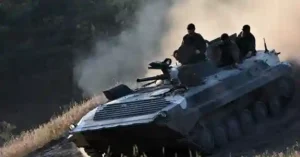
Current State of Affairs
The Israel-Iran conflict has escalated significantly in recent years, with increasing direct confrontations, proxy battles, and technological advancements shaping the dynamics. Current developments highlight the complexity of this rivalry, as both nations intensify their efforts to secure their interests and counter perceived threats.
Iran’s Regional Ambitions and Activities
Iran has continued to expand its influence across the Middle East through proxies and aligned groups. Its presence in Syria, support for Hezbollah in Lebanon, and backing of various factions in Iraq and Yemen demonstrate its goal of establishing a “Shia Crescent” to project power and counter Sunni-dominated states.
In Syria, Iran has bolstered President Bashar al-Assad’s regime while establishing military bases and deploying advanced weaponry. This has heightened tensions with Israel, which views these actions as a direct threat to its security. Iranian weapons transfers to Hezbollah and Hamas have further exacerbated regional instability.
Israel’s Preemptive and Defensive Strategies
Israel has adopted a proactive approach to counter Iranian activities, particularly in Syria and Lebanon. The Israeli Defense Forces (IDF) have conducted hundreds of airstrikes on Iranian positions, weapons depots, and proxy militias in Syria, aiming to prevent the establishment of a permanent Iranian military presence.
Israel’s “Campaign Between the Wars” strategy involves leveraging military intelligence, precision strikes, and cyber operations to weaken Iran’s regional network without escalating into full-scale war. These measures reflect Israel’s determination to address threats before they materialize.
Tensions over Iran’s Nuclear Program
Iran’s nuclear program remains a central point of contention. Following the United States’ withdrawal from the Joint Comprehensive Plan of Action (JCPOA) in 2018 and subsequent imposition of sanctions, Iran resumed uranium enrichment activities, exceeding agreed limits.
Israel has consistently lobbied for international action to halt Iran’s nuclear advancements, warning that a nuclear-armed Iran poses an existential threat. Covert operations, including cyberattacks and targeted assassinations of Iranian nuclear scientists, have been linked to Israel, further straining relations.
Proxy Confrontations and Escalations
The conflict has extended to proxy wars, with Iran supporting groups like Hezbollah and Hamas, which have launched rocket attacks on Israel. In response, Israel has targeted these groups’ infrastructure and leadership, particularly during clashes in Gaza.
Tensions are not limited to the Middle East. Iranian-backed groups have conducted cyberattacks on Israeli infrastructure, while Israel has retaliated with its own cyber capabilities. These confrontations highlight the growing role of technology in the conflict.
International Involvement and Reactions
The global community remains deeply involved in the Israel-Iran conflict. The United States, a key ally of Israel, provides military and diplomatic support, while also attempting to manage Iran through sanctions and diplomatic negotiations.
Russia and China, which maintain relations with Iran, have often countered Western efforts to isolate Tehran, complicating international mediation efforts. The European Union has sought to revive the JCPOA, but progress has been slow due to Iran’s nuclear advancements and geopolitical rivalries.
Public Perception and Media Influence
The conflict has increasingly played out in the court of public opinion. Both Israel and Iran use media and social platforms to influence narratives, gain international support, and justify their actions. Propaganda, misinformation, and psychological operations are integral to this aspect of the rivalry.
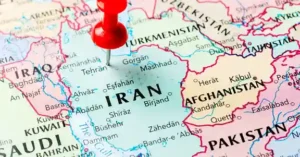
The Role of EchooPlus
In the modern era, technology plays a pivotal role in shaping conflicts, and the Israel-Iran rivalry is no exception. EchooPlus, a term or entity representing advanced technological, communicative, or strategic tools, has emerged as a critical factor in this complex geopolitical landscape. Its influence extends across warfare, diplomacy, intelligence, and public perception, redefining how conflicts are waged and managed.
What is EchooPlus?
EchooPlus could signify a cutting-edge technology, a cyber platform, or a strategic system enabling rapid communication, data analysis, or operational coordination. It is a symbol of how technology bridges gaps between traditional and modern warfare. While details about EchooPlus might vary, its role as a transformative tool in the Israel-Iran conflict remains evident.
EchooPlus in Cybersecurity and Warfare
One of the most significant impacts of EchooPlus is in the realm of cybersecurity and digital warfare. Both Israel and Iran are known for their advanced cyber capabilities, often using them to target each other’s critical infrastructure.
Iran’s Cyber Offensives:
Iran has launched cyberattacks on Israeli power grids, financial institutions, and government systems. EchooPlus, with its potential for real-time threat detection and countermeasures, provides Israel with a robust defense mechanism.
Israel’s Cyber Retaliation:
Israel, often credited with the development of sophisticated tools like Stuxnet, uses EchooPlus-like systems to infiltrate Iranian networks, disrupt nuclear operations, and gather intelligence. The role of EchooPlus in these operations highlights the growing importance of technological superiority in modern conflicts.
Enhancing Intelligence and Surveillance
In the Israel-Iran conflict, intelligence is a cornerstone of strategy. EchooPlus integrates advanced surveillance systems, satellite imagery, and AI-driven analytics to enhance situational awareness.
For Israel:
EchooPlus enables precise monitoring of Iranian troop movements, weapons transfers, and proxy activities in real time. This capability informs Israel’s preemptive strikes and defensive measures.
For Iran:
EchooPlus, or its equivalent, helps Tehran track Israeli military maneuvers and strengthen its proxy network across the region.
Influence on Propaganda and Public Perception
Both Israel and Iran recognize the importance of shaping narratives. EchooPlus plays a crucial role in disseminating information, countering misinformation, and rallying domestic and international support.
Social Media Campaigns:
EchooPlus facilitates the creation of targeted campaigns to highlight each side’s perspective. For example, Iran may use EchooPlus to amplify anti-Israel sentiment, while Israel employs it to expose Iranian threats.
Psychological Operations:
Advanced tools like EchooPlus enable psychological warfare, including spreading disinformation to weaken adversaries’ morale and sway public opinion.
Logistical and Strategic Coordination
On the battlefield, EchooPlus provides unparalleled advantages in logistics and coordination. Its ability to integrate communication networks, streamline supply chains, and optimize resource allocation gives a strategic edge to the nation employing it effectively.
Real-Time Coordination:
EchooPlus allows commanders to make informed decisions by providing real-time data on enemy positions, weather conditions, and logistical needs.
Drones and Autonomous Systems:
EchooPlus supports the deployment and management of drones and other autonomous systems, a critical component of modern warfare.
Diplomatic Leverage
Beyond the battlefield, EchooPlus can also serve as a tool for diplomacy. By showcasing its technological prowess, a nation can deter adversaries, gain leverage in negotiations, or attract alliances. For Israel, EchooPlus reinforces its reputation as a technological powerhouse, while for Iran, developing equivalent systems signifies resistance to Western dominance.
Challenges and Risks
While EchooPlus offers significant advantages, it also introduces challenges:
Escalation Risks:
Advanced technologies increase the likelihood of miscalculations, leading to unintended escalations.
Vulnerability to Cyberattacks:
Dependence on systems like EchooPlus makes them prime targets for adversaries. A successful breach could compromise critical operations.

Geopolitical Implications
The Israel-Iran conflict extends beyond the direct rivalry between the two nations, profoundly influencing the broader geopolitical landscape of the Middle East and beyond. This section explores how the conflict impacts regional stability, global power dynamics, and the relationships between key international players.
Regional Power Struggles
The Israel-Iran conflict is at the heart of a larger contest for regional dominance. Both nations aspire to shape the Middle East according to their strategic and ideological visions.
Iran’s Regional Influence:
Iran seeks to establish itself as the dominant power in the region by supporting a network of proxies and allies. Its “Axis of Resistance,” including Hezbollah, Syria, and factions in Iraq and Yemen, aims to counterbalance Israel and its allies, particularly Saudi Arabia.
Tehran’s activities in these countries exacerbate tensions and often lead to direct or indirect confrontations with Israel.
Israel’s Security Concerns:
Israel’s priority is to maintain its security and prevent any threats from Iran and its proxies. This has led to preemptive strikes, covert operations, and alliances with Arab states, particularly under the Abraham Accords.
The Role of Arab States
The Israel-Iran conflict has reshaped alliances among Arab nations. While many Arab states traditionally opposed Israel, the shared threat of Iranian expansionism has led to a realignment of interests.
The Abraham Accords:
Agreements normalizing relations between Israel and countries like the UAE and Bahrain signify a shift in regional dynamics. These nations view Iran as a more immediate threat than Israel, fostering cooperation on security and economic fronts.
Saudi Arabia’s Balancing Act:
Saudi Arabia has cautiously aligned with Israel on countering Iran while maintaining its leadership role in the Muslim world. Riyadh’s approach highlights the complexity of navigating the region’s shifting alliances.
Impact on Global Powers
The Israel-Iran conflict also involves major global powers, each with its own interests and strategies in the region.
United States:
The US is a staunch ally of Israel, providing military and diplomatic support. It also seeks to contain Iran through sanctions, military presence, and diplomatic efforts, such as negotiations over the nuclear deal. However, balancing support for Israel with broader regional stability remains a challenge.
Russia and China:
Russia and China have cultivated strong ties with Iran, primarily for strategic and economic reasons. Russia views Iran as a key partner in countering US influence and maintaining its presence in Syria. China, through its Belt and Road Initiative, seeks to strengthen trade and energy ties with Iran while avoiding open confrontation with Israel. This triangular dynamic between the US, Russia, and China further complicates efforts to resolve the conflict.
Energy and Economic Implications
The conflict has significant repercussions for global energy markets and regional economies.
Impact on Oil Prices:
Escalations in the Israel-Iran conflict often lead to volatility in oil markets, particularly given Iran’s proximity to the Strait of Hormuz, a critical chokepoint for global energy supplies.
Economic Sanctions:
US-led sanctions on Iran have crippled its economy but also driven Tehran closer to non-Western powers like China and Russia. Meanwhile, Israel benefits economically from its growing ties with Arab states and technological leadership.
Humanitarian Concerns
While the geopolitical implications are significant, the human cost of the Israel-Iran conflict is profound. Proxy wars and regional instability have displaced millions, fueled humanitarian crises, and perpetuated cycles of violence in countries like Syria and Yemen.
Global Security Concerns
The conflict poses risks of broader instability:
Nuclear Proliferation:
Iran’s nuclear ambitions and Israel’s opposition create a potential flashpoint for global conflict. A nuclear-armed Iran could trigger an arms race in the Middle East.
Terrorism and Extremism:
The rivalry indirectly fuels extremist ideologies, with both sides supporting factions that engage in violence.

Military Strategies and Technological Advances
The Israel-Iran conflict is not only a geopolitical struggle but also a battleground for advanced military strategies and technological innovations. Both nations have developed and deployed sophisticated tactics and tools to gain an advantage, often redefining modern warfare in the process.
Israel’s Military Strategies
Israel’s military doctrine revolves around deterrence, preemption, and rapid response. The country has built one of the most technologically advanced militaries in the world, tailored to counter threats from Iran and its proxies.
The Campaign Between Wars (CBW):
Israel employs a proactive strategy to weaken Iran’s military presence in the region without escalating into full-scale war. Frequent airstrikes on Iranian targets in Syria and Iraq to disrupt weapons transfers to Hezbollah. Covert operations targeting key Iranian assets, such as nuclear facilities and military leaders.
Missile Defense Systems:
Israel’s multi-layered missile defense systems, such as the Iron Dome, David’s Sling, and Arrow, are designed to intercept short-range rockets, medium-range missiles, and long-range threats. These systems protect Israeli civilians from missile attacks by Iran and its proxies, including Hezbollah and Hamas.
Special Forces Operations:
Israel’s elite units, such as Sayeret Matkal, conduct high-risk missions, including intelligence gathering, sabotage, and hostage rescue. These operations are often aimed at disrupting Iranian activities and gaining actionable intelligence.
Iran’s Military Strategies
Iran’s military approach is asymmetrical, leveraging its proxies, ballistic missiles, and unconventional tactics to offset Israel’s technological and conventional superiority.
Proxy Warfare:
Iran relies on a network of militias and allies, including Hezbollah in Lebanon, militias in Iraq, and Hamas in Gaza. These groups act as extensions of Iran’s military, enabling it to challenge Israel indirectly. Hezbollah’s rocket arsenal, estimated at over 150,000 projectiles, poses a significant threat to Israel. Iran supplies advanced weaponry and training to its proxies, increasing their capability to strike deep into Israeli territory.
Ballistic Missile Program:
Iran has invested heavily in its ballistic missile program, developing missiles with ranges capable of striking Israel. The use of precision-guided munitions (PGMs) enhances the accuracy of its arsenal, creating a significant threat to Israeli infrastructure.
Drone Warfare:
Iran has become a leader in drone technology, using unmanned aerial vehicles (UAVs) for surveillance, attacks, and supplying proxies. Iranian drones have been used in attacks on Israeli targets and in regional conflicts, showcasing their operational reach.
Technological Advances in the Conflict
The Israel-Iran rivalry has driven advancements in military technology, often setting benchmarks for modern warfare.
Cyber Warfare:
Israel’s Cyber Capabilities:
Israel has been at the forefront of cyber warfare, conducting offensive and defensive operations. The Stuxnet virus, attributed to Israel and the US, disrupted Iran’s nuclear program and demonstrated the power of cyber tools in modern conflicts.
Iran’s Cyber Offensives:
Iran has launched cyberattacks on Israeli critical infrastructure, including financial systems, transportation networks, and water facilities. Cyber warfare remains a key battleground in this conflict.
Artificial Intelligence (AI):
AI-driven analytics and systems play a critical role in intelligence gathering, threat prediction, and operational decision-making. Israel uses AI for real-time monitoring of Iranian movements, target selection, and operational planning. Iran employs AI in drone operations and counter-surveillance strategies.
Advanced Surveillance and Reconnaissance:
Both nations rely on satellite imagery, electronic intelligence (ELINT), and signal intelligence (SIGINT) to monitor each other’s activities. Israel’s advanced satellites provide high-resolution imagery for strategic planning, while Iran utilizes surveillance drones for regional intelligence.
Autonomous Systems:
Autonomous vehicles, including drones and ground systems, are a growing component of the conflict. Israel uses autonomous drones for airstrikes, reconnaissance, and logistics. Iran has developed swarm drone technology, posing a significant challenge to conventional air defenses.
Key Battles and Operations
Several notable engagements have highlighted the evolving military strategies and technologies in the Israel-Iran conflict:
Israeli Airstrikes in Syria:
Targeting Iranian installations and weapons shipments, these strikes showcase Israel’s ability to project power and disrupt Iranian activities.
Iran’s Missile Strikes on US Bases (Indirect Message to Israel):
In response to regional provocations, Iran has demonstrated its missile capabilities, indirectly warning Israel of its reach and precision.
Drone Attacks on Israeli-Owned Ships:
Iran has used drones to target Israeli maritime assets, highlighting the conflict’s spillover into international waters.
Challenges and Risks of Escalation
While advanced strategies and technologies provide advantages, they also carry risks:
Unintended Escalations:
Precision strikes and covert operations could misfire, leading to broader regional conflict.
Arms Race:
The technological competition between Israel and Iran risks sparking an arms race in the Middle East, with other nations seeking similar capabilities.
Civilian Impact:
The use of advanced weaponry, particularly rockets and drones, often results in collateral damage, increasing civilian casualties and humanitarian crises.

Economic Ramifications
The Israel-Iran conflict has far-reaching economic consequences, not only for the nations directly involved but also for the broader Middle East region and global markets. From military expenditures to disruptions in trade and energy supplies, the economic ramifications of this rivalry are profound and multifaceted.
Impact on National Economies
Israel’s Economic Burden:
Israel’s robust economy supports its high military expenditures, but the sustained conflict with Iran creates significant financial challenges:
Defense Spending:
Israel allocates a substantial portion of its GDP to defense, including maintaining its advanced missile defense systems, conducting airstrikes, and investing in cutting-edge technology like cyber and AI tools.
Infrastructure Resilience:
The need to fortify civilian infrastructure against missile and drone attacks adds to economic pressures.
Lost Economic Opportunities:
Heightened tensions discourage foreign investment and tourism, particularly during escalations.
Iran’s Economic Challenges:
Iran’s economy has been severely strained by the conflict and international sanctions:
Sanctions Impact:
US-led sanctions targeting Iran’s oil exports, banking system, and key industries have crippled its economy, limiting resources for military and proxy support.
Resource Allocation:
Iran diverts significant funds to its military and proxy networks, leaving less for domestic development and economic stability.
Inflation and Unemployment:
Sanctions and military expenditures exacerbate inflation and unemployment, fueling domestic dissatisfaction.
Disruption to Global Energy Markets
Middle East Oil Supplies:
The Israel-Iran conflict threatens the stability of global oil markets:
Strait of Hormuz:
Iran’s proximity to this critical chokepoint for global oil transport gives it leverage. Any military escalation could disrupt oil shipments, causing price spikes.
Attacks on Energy Infrastructure:
Iranian proxies have targeted oil facilities in Saudi Arabia and elsewhere, while Israel’s operations in the region raise the risk of retaliatory actions affecting energy supplies.
Oil Price Volatility:
Market fears of conflict escalation often lead to fluctuations in oil prices, impacting economies worldwide. Nations dependent on Middle Eastern oil are particularly vulnerable to these disruptions.
Regional Trade and Economic Alliances
The Abraham Accords and Economic Partnerships:
The normalization agreements between Israel and Arab states, such as the UAE and Bahrain, have created new economic opportunities:
Trade Agreements:
Israel’s trade with these nations has grown significantly, including collaborations in technology, energy, and defense sectors.
Infrastructure Projects:
Joint investments in infrastructure, such as transportation and renewable energy, have strengthened regional economies.
Iran’s Counter-Strategy:
Iran has sought to deepen its economic ties with non-Western nations to counter isolation:
China’s Belt and Road Initiative:
Iran’s inclusion in this initiative has led to investments in infrastructure and energy, although these benefits are limited by sanctions.
Russia and Regional Allies:
Iran’s partnerships with Russia and others help it sustain its economy, albeit at a reduced scale.
Economic Costs of Proxy Wars
Iran’s support for proxy groups like Hezbollah, Hamas, and militias in Iraq and Yemen places a significant strain on its economy:
Funding and Armament:
Providing financial and military support to these groups drains Iran’s resources.
Repercussions from Israel’s Strikes:
Israeli strikes on proxy infrastructure and weapons shipments often result in financial losses for Iran. Israel, too, faces economic repercussions:
Defense Against Proxies:
Constant readiness to counter threats from Iranian-backed groups, including deploying missile defenses and rebuilding damaged infrastructure, is costly.
Civilian and Humanitarian Impacts
The economic toll of the conflict extends to civilian populations in both nations and across the region:
Economic Hardship in Iran:
Sanctions and military spending have worsened living conditions for Iranian citizens, leading to widespread poverty and protests.
Civilian Costs in Israel:
Frequent missile attacks and heightened security concerns disrupt daily life and economic activities.
Humanitarian Crises in Proxy War Zones:
Countries like Syria, Yemen, and Lebanon suffer devastating economic consequences as a result of the conflict, including displacement, destruction of infrastructure, and loss of livelihoods.
Technological Innovation as an Economic Driver
Israel’s Tech Economy:
Despite the costs, the conflict has spurred Israel’s technological innovation, particularly in defense, cybersecurity, and AI. These advancements have become key exports, boosting Israel’s economy and strengthening its global standing.
Iran’s Adaptation:
While heavily sanctioned, Iran has developed its own technological capabilities, including drone manufacturing and cyber tools, which it uses for economic and military purposes.
Long-Term Implications for Regional Stability
Investment and Development:
Ongoing instability discourages foreign investment and hampers economic growth across the Middle East.
Arms Race and Economic Drain:
The competition for military superiority diverts resources from critical economic and social development projects.
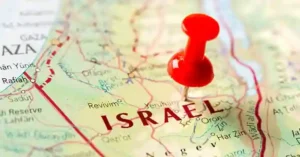
International Diplomacy and Global Reactions
The Israel-Iran conflict is not solely a bilateral issue; it has significant international dimensions. Global powers and international organizations play crucial roles in shaping the conflict’s dynamics, attempting to mediate, influence, or intervene in various ways. This section examines the international diplomacy surrounding the conflict and the reactions of key global players.
United States’ Role and Policy
The United States has been a key player in the Israel-Iran conflict, with its foreign policy heavily influencing the trajectory of the rivalry.
Support for Israel:
The U.S. is Israel’s primary ally and provides extensive military, economic, and diplomatic support.
Military Aid:
The U.S. provides Israel with billions of dollars in military aid annually, ensuring that Israel maintains a qualitative edge over its regional adversaries, including Iran.
Diplomatic Support:
The U.S. consistently supports Israel in international forums, including the United Nations, where it vetoes resolutions critical of Israel.
Security Guarantees:
The U.S. extends security guarantees to Israel, including the promise to prevent Iran from acquiring nuclear weapons through both diplomatic and military means.
Iran’s Response to U.S. Involvement:
Iran perceives U.S. involvement as a direct threat to its sovereignty and regional ambitions. The U.S. has imposed harsh sanctions on Iran, particularly targeting its nuclear program and military activities, leading to heightened tensions.
European Union’s Diplomatic Engagement
The European Union (EU) has a complex relationship with both Israel and Iran, often seeking to balance diplomacy between the two nations while pushing for de-escalation.
The Iran Nuclear Deal (JCPOA):
The EU played a pivotal role in negotiating the Joint Comprehensive Plan of Action (JCPOA) in 2015, which aimed to limit Iran’s nuclear program in exchange for the lifting of sanctions.
Support for the JCPOA:
European nations, including Germany, France, and the UK, have supported the agreement as a way to ensure that Iran’s nuclear ambitions are curbed without resorting to military action.
U.S. Withdrawal from the Deal:
The U.S. withdrawal from the JCPOA in 2018 under President Donald Trump led to increased tensions and the re-imposition of sanctions, further complicating the EU’s role in mediating the conflict.
Balancing Relations with Israel and Iran:
The EU’s position is shaped by its economic ties with Iran, as well as its strategic alliance with Israel. European countries often advocate for dialogue and diplomatic solutions while condemning violence and violations of international law.
Russia and China: Strategic Alliances with Iran
Both Russia and China have formed strategic alliances with Iran, driven by shared geopolitical interests and mutual opposition to U.S. dominance in the Middle East.
Russia’s Influence in the Region:
Russia has been a key ally for Iran, particularly in the context of the Syrian Civil War.
Military Support:
Russia provides Iran with military equipment and technical support, particularly in the fields of air defense and ballistic missile systems.
Syria as a Shared Interest:
Both nations support the Assad regime in Syria, which is seen as a critical ally in countering Israeli and Western influence in the region.
Balancing Relations with Israel:
While Russia has close ties with Iran, it also maintains a working relationship with Israel, particularly in the areas of defense and intelligence. This delicate balance allows Russia to exert influence on both sides.
China’s Growing Influence:
China has strengthened its economic and strategic ties with Iran, particularly through investments under the Belt and Road Initiative.
Economic Engagement:
China is one of Iran’s largest trading partners, providing critical support for its energy sector and infrastructure projects.
Opposition to U.S. Sanctions:
China has opposed U.S. sanctions on Iran and has provided a counterbalance to U.S. pressure in the region.
Russia and China’s Role in Nuclear Diplomacy:
Both Russia and China are members of the P5+1 (the five permanent members of the UN Security Council, plus Germany) involved in the negotiations over Iran’s nuclear program. Their involvement is crucial in shaping the diplomatic efforts surrounding Iran’s nuclear ambitions.
United Nations’ Efforts to Mediate
The United Nations (UN) has been actively involved in attempting to mediate the Israel-Iran conflict and address the broader Middle Eastern issues arising from it.
UN Security Council Resolutions:
The UN Security Council has passed several resolutions aimed at addressing Iran’s nuclear program and Israel’s military actions in the region.
Resolution 2231 (2015):
This resolution endorsed the JCPOA and imposed restrictions on Iran’s missile activities.
Sanctions and Enforcement:
The UN has also imposed sanctions on Iran for its nuclear and missile activities, although enforcement has been inconsistent due to geopolitical divisions within the Security Council.
Humanitarian Efforts:
The UN has played a role in addressing the humanitarian crises resulting from the conflict, particularly in Syria and Yemen, where Iranian-backed forces are involved. Efforts include providing aid to displaced persons and facilitating peace talks between opposing factions.
Arab States and the Gulf Cooperation Council (GCC)
The Gulf Cooperation Council (GCC), comprising six Arab states (Saudi Arabia, UAE, Qatar, Bahrain, Kuwait, and Oman), has been deeply affected by the Israel-Iran conflict. The rivalry has shaped the GCC’s foreign policies and security strategies, particularly with regards to Iran.
Saudi Arabia’s Role:
Saudi Arabia views Iran as its primary regional rival, particularly in the context of their religious and ideological differences (Sunni vs. Shia Islam). The kingdom has supported Israel’s efforts to counter Iran’s influence, especially through covert cooperation and public diplomatic gestures.
Military Alliances:
Saudi Arabia has worked with Israel to counter Iranian-backed militias in Yemen and Iraq, although this cooperation remains largely covert.
UAE and Bahrain’s Shift in Policy:
The UAE and Bahrain’s normalization of relations with Israel through the Abraham Accords is a direct response to the perceived Iranian threat. These agreements have led to increased economic, technological, and defense cooperation between the Gulf states and Israel.
Public Opinion and Grassroots Movements
While international diplomacy plays a key role, public opinion in various countries also shapes the global response to the Israel-Iran conflict.
Pro-Israel and Pro-Palestinian Movements:
The global political landscape is divided between pro-Israel and pro-Palestinian sympathies. Movements in the West often support Israel’s right to self-defense, while in many parts of the Middle East, there is widespread support for Palestine and resistance to Israeli actions.
European Protests:
European protests against Israeli policies have grown in recent years, particularly in response to military operations in Gaza.
Arab Solidarity with Iran:
In many Arab nations, there is solidarity with Iran’s stance against Israel, despite the political differences between Iran and many Arab states.

Future Outlook and Prospects for Resolution
The Israel-Iran conflict, characterized by decades of tension, proxy wars, and geopolitical maneuvering, poses significant challenges for peace in the Middle East. Looking ahead, several potential scenarios could shape the future of this rivalry. While full-scale war remains a possibility, diplomatic efforts, regional dynamics, and global pressure offer potential pathways to de-escalation or even resolution. This section examines the various future outlooks and the prospects for resolving the conflict.
Escalation and the Possibility of a Full-Scale War
Despite numerous diplomatic initiatives and attempts at mediation, the possibility of a full-scale military confrontation between Israel and Iran remains a real concern. Several factors could lead to an escalation of tensions:
Iran’s Nuclear Program:
One of the primary flashpoints in the conflict is Iran’s nuclear ambitions. Israel has repeatedly stated that it will not allow Iran to acquire nuclear weapons, and it has indicated that it would take military action to prevent this. Should Iran’s nuclear program continue to advance, or if diplomatic efforts fail to curb its development, the risk of military intervention could increase, either through Israeli airstrikes or a broader regional conflict.
Proxy Warfare Expansion:
As both Israel and Iran have relied heavily on proxy groups to engage each other indirectly, the expansion of these proxy wars could lead to larger, more intense confrontations. Iranian-backed militias in Iraq, Syria, Lebanon (Hezbollah), and Yemen could intensify their attacks on Israeli interests, prompting retaliation. Such escalation could involve military operations by Israel against Iranian targets in these countries, increasing the risk of regional war.
Cyberattacks and Cyber Warfare:
Both Israel and Iran have developed advanced cyber capabilities, and the possibility of cyberattacks escalating into broader military conflict exists. A significant cyberattack, either on Israel’s infrastructure or Iranian assets, could lead to a direct military response, further destabilizing the region.
Internal Unrest in Iran or Israel:
Internal political dynamics could also contribute to the conflict’s escalation. In Iran, ongoing protests and economic challenges could push the government to adopt a more aggressive foreign policy to distract from domestic issues. Similarly, Israeli domestic pressures related to security concerns could lead to more aggressive military actions.
Diplomatic Initiatives: The Role of International Mediators
While military escalation remains a possibility, diplomatic efforts continue to play a key role in seeking a peaceful resolution to the conflict. International mediators, including the United Nations, the European Union, and global powers, may play an important role in preventing further escalation and facilitating negotiations.
Reviving the JCPOA (Iran Nuclear Deal):
The Joint Comprehensive Plan of Action (JCPOA) remains one of the most prominent diplomatic efforts aimed at addressing Iran’s nuclear ambitions. The possibility of rejoining the deal, or creating a new version of it, offers a potential avenue for reducing tensions.
EU’s Role in Reviving Negotiations:
The European Union, along with Russia and China, has consistently advocated for diplomacy and the preservation of the JCPOA. The EU’s efforts to restart negotiations between the U.S. and Iran could lead to de-escalation, particularly if the U.S. decides to re-enter the agreement.
US-Iran Diplomacy:
The Biden administration has expressed a willingness to engage in diplomacy with Iran, though the road to resuming talks on Iran’s nuclear program has been fraught with challenges. Progress in U.S.-Iran negotiations could provide a framework for broader peace talks. However, the divergent interests of both nations make this a difficult path.
Regional Diplomacy:
Many Arab states, particularly Saudi Arabia, have begun to recognize the need for regional cooperation to counter Iranian influence. The Abraham Accords, which led to normalization of ties between Israel and the UAE, Bahrain, and others, have opened up diplomatic channels that could pave the way for a regional security framework. The Arab Gulf States may play a critical role in mediating between Israel and Iran.
United Nations and Global Pressure:
The United Nations could exert more pressure on both Israel and Iran to engage in meaningful talks. However, due to veto power within the UN Security Council, achieving a unified global approach remains challenging. Nonetheless, global pressure through sanctions or diplomatic measures could compel both nations to seek a negotiated settlement.
Changing Dynamics in the Middle East
The broader geopolitical landscape in the Middle East is shifting, which could influence the future of the Israel-Iran conflict. Several evolving trends may help chart a path forward:
Normalization of Arab-Israeli Relations:
The normalization of relations between Israel and several Arab states, including the UAE, Bahrain, Sudan, and Morocco, through the Abraham Accords has shifted the regional balance. These countries, previously wary of Israel, now see Iran as a greater threat. This shift could lead to a reconfiguration of alliances, with Israel and its Arab neighbors potentially uniting to contain Iran’s influence. This new alignment could provide opportunities for peace initiatives or greater cooperation in the region.
Iran’s Regional Isolation:
As more Arab states align with Israel, Iran may find itself increasingly isolated diplomatically. This isolation could push Iran to reconsider its regional strategy, particularly in relation to Israel, in order to secure its economic and political interests.
Economic Integration in the Middle East:
The growing economic cooperation between Israel and Arab states could create new incentives for de-escalation. Projects in energy, technology, and trade could incentivize Israel and its neighbors to prioritize economic growth over military conflict, reducing the likelihood of war. However, this depends on Iran’s willingness to reconsider its confrontational stance toward Israel.
Possibility of a Long-Term Stalemate
In the absence of a breakthrough in diplomacy, the conflict may settle into a prolonged stalemate, with both sides continuing their low-intensity engagements and proxy wars. This situation could involve:
Continued Proxy Conflicts:
Proxy warfare in Syria, Iraq, Lebanon, and Yemen may persist as Iran continues to support militant groups and Israel retaliates with airstrikes. These low-level engagements could continue indefinitely, contributing to instability in the region without leading to an all-out war.
Military Deterrence and Status Quo:
Both Israel and Iran possess significant military capabilities, including nuclear arsenals (Israel’s nuclear ambiguity and Iran’s nuclear aspirations). The balance of power and the threat of mutually assured destruction may deter both sides from direct military confrontation, maintaining a fragile peace through deterrence rather than resolution.
Economic Pressures and Sanctions:
Both countries may face continued economic challenges due to sanctions and military spending. This ongoing pressure may eventually force both Israel and Iran to reconsider their priorities and seek negotiations, but the road to this point is unclear.
Pathways to Peace: Key Factors for Success
A lasting resolution to the Israel-Iran conflict will depend on several key factors:
Mutual Recognition and Diplomacy:
A resolution would likely require some form of mutual recognition between Israel and Iran, as well as the willingness to engage in sustained diplomatic negotiations. This could be facilitated through international mediators and the alignment of regional powers.
Addressing Iran’s Nuclear Program:
A comprehensive and verifiable deal that addresses Iran’s nuclear ambitions is crucial. Ensuring that Iran does not acquire nuclear weapons could reduce Israel’s security concerns and open the door to broader peace efforts.
Regional Security Framework:
Establishing a regional security framework that includes Israel, Iran, and the Arab states could create mechanisms for conflict resolution, confidence-building measures, and economic cooperation. This framework could provide stability and deter future confrontations.
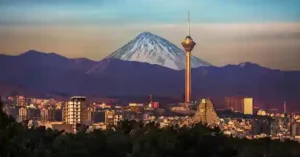
Conclusion
The Israel-Iran conflict is one of the most complex and consequential geopolitical struggles in the modern world. Driven by a mix of ideological, security, and economic factors, this rivalry has shaped not only the Middle East but also global dynamics. While the prospects for a peaceful resolution remain uncertain, diplomatic efforts, changing regional alliances, and international pressure offer pathways for de-escalation. However, the possibility of full-scale war, ongoing proxy conflicts, and the continued pursuit of nuclear capabilities by Iran continue to pose significant risks. Ultimately, the future of this conflict will depend on the ability of all parties involved to navigate their deep-seated tensions, engage in meaningful diplomacy, and seek long-term solutions that prioritize regional stability and security. As the world watches, the resolution of the Israel-Iran conflict could hold profound implications for the Middle East and the international community at large.
[WPSM_AC id=639]
